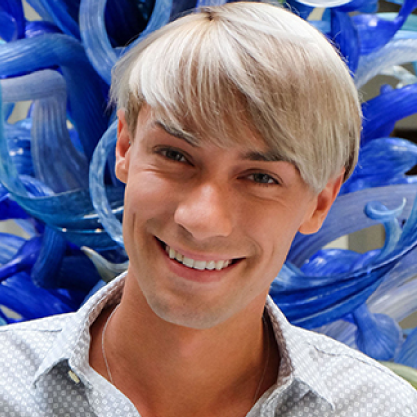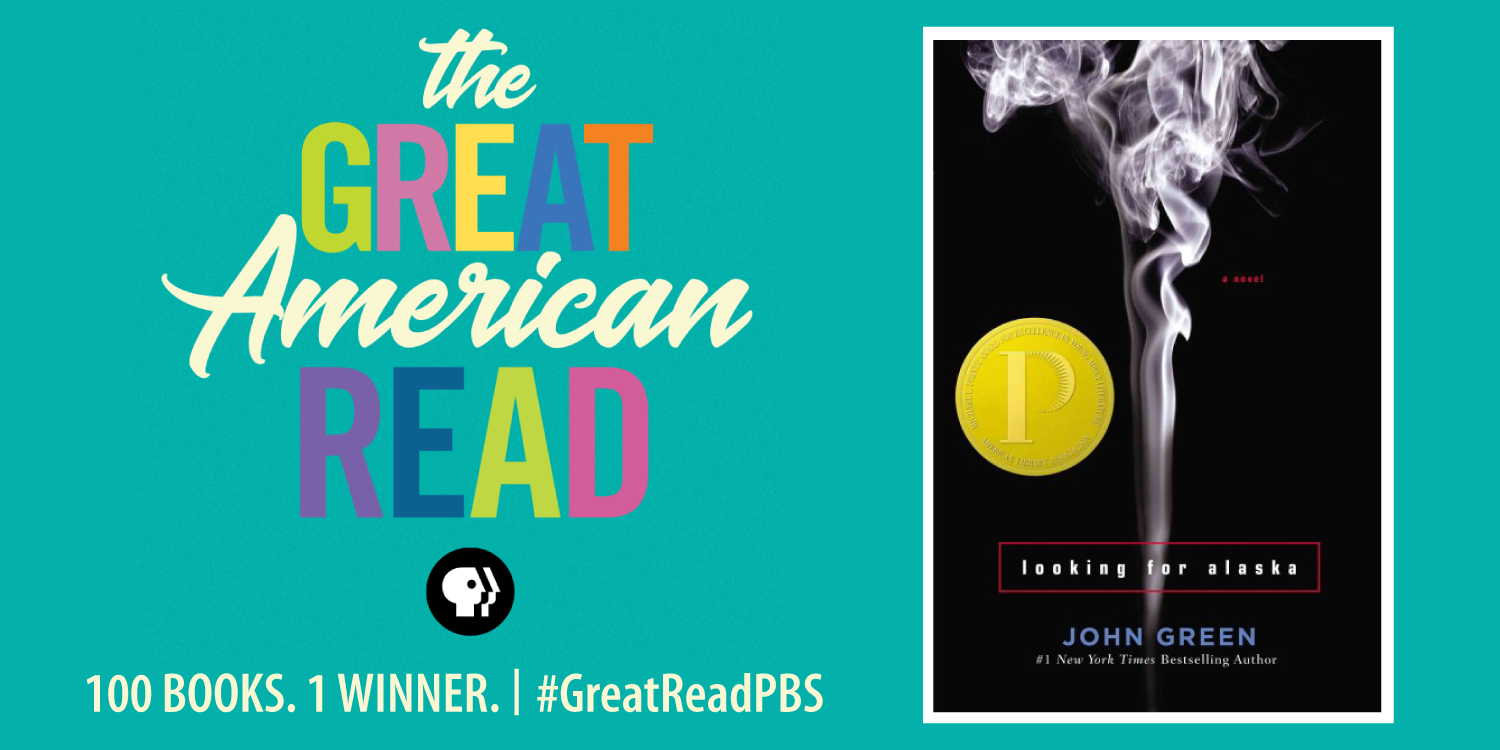The Great American Read is a new eight-part series from PBS that explores and celebrates the power of reading, told through America’s 100 best-loved novels. Join the conversation with PBS and WUCF!
Read the list of 100 books.
Vote for your favorite.
Share your love of reading using #GreatReadPBS.
The series returns to WUCF on September 11 at 8 p.m.
For more information and to vote, visit pbs.org/greatamericanread.
I have known many strong women in my life, but I have only known one who resembles the title character in John Green’s young adult novel, Looking for Alaska. It was not just her assuredness, but also her enigmatic nature that attracted me to her, and eventually, this was also what pushed me away. Like Miles “Pudge” Halter, the narrator and main character of the novel, I love her – not romantically nor always willingly, but the love of kindred spirits seeking the same “Great Perhaps.”
It was at her insistence that I first read Looking for Alaska. At the time, I was just a few years older than the main characters in the novel, who are high school juniors at Culver Creek Boarding School in Alabama. Pudge, the endearing, romantic and somewhat aloof narrator, has a penchant for memorizing significant people’s last words. Inspired by the last words of the poet François Rabelais, Pudge hopes to find the “Great Perhaps” at his new school. Throughout the course of the novel he does encounter the complexities of humanity – love, friendship and mortality are analyzed with an adolescent angst that any adult or teen reader will recognize.
Looking for Alaska is a coming of age story with familiar themes, but it is Green’s character development that makes the book a must-read. At first, I rolled my eyes over Pudge and his friends’ austerity, but I quickly remembered that as a high school student I also viewed trivialities as grave matters. Periodically the characters feel like typical teen stereotypes, though this bears no authorial judgment or malice, but rather presents a keen understanding of the teenage mind. Green admits that there are aspects of the novel that are autobiographical – he also attended a boarding school in Alabama similar to Culver Creek – and this perhaps accounts for the authenticity of his characters.
While Pudge is certainly a memorable and unique character, Alaska is the story’s lynchpin. She is brilliant and rebellious, leading her friends in hijinks likely to land them in trouble with the school’s disciplinarian, humorously and appropriately nicknamed “the Eagle.” But behind her carefree attitude is great sadness – she lost her mother at a young age and this trauma has affected her deeply. She’s complex – existing between poignant and playful – but the greyness of her character is what makes her memorable. So often, YA characters are black or white, good or bad, but Alaska exists outside of the traditional binary, making her feel real.
It was a third of the way through the book before I realized why My Alaska assigned it to me. She wanted me to understand her through the lens of a made-up character. It is common in young adulthood to desperately seek out those whom we identify with in order to explain ourselves. So often these are celebrities or other public figures, but we may also find truth in the realm of fiction. There were many similarities – My Alaska also lost her mother at a young age, drank and chain-smoked with an irreverence for her health, and was prone to debilitating mood swings – and differences – My Alaska did not speak with a Southern-slang nor orchestrate high stake pranks – but the true identifier was the character’s restlessness. My Alaska shared an unwillingness to settle for the bounding realities of our world – she too, was incessantly seeking a personal escape from the “labyrinth” of humanity, a concept attributed to the last words of Simon Bolivar. Like Pudge and Alaska, our friendship was one of introspection, she pushed me to see differently. Together, we discovered ourselves and our place within the world.
We had a falling out soon after I finished reading the novel. Her perceptive criticism came too close to home when she told me I was making a serious mistake by dating someone. And while I learned so many important lessons from that romantic relationship, she was right about my chosen partner: I deserved better. But by the time I realized this, it was too late—our friendship, marred by petty cruelty, was irreparable. We didn’t speak for a few years. We were so angry, so hurt. We each pretended the other did not exist – I mourned her, and she mourned me. After graduation, she moved to London and I stayed in Orlando. It was truly over. And like Pudge after he loses his Alaska in Green’s novel, I felt guilt and regret.
My Alaska’s father passed away last year. He was living in Florida, and she moved home following his cancer prognosis. It was during that time that we rekindled our friendship. And despite the years of hurt, we were able to recognize our need for one another. As often happens with a major loss, death closed the door on a chapter in her life – a chapter that included our friendship. I supported her during this transition, but I also knew that we were truly over when she took that last one-way trip to London, her new home.
There comes a point where you realize you have learned all of the lessons you possibly can with someone. This demarcation is not as clear with friendship as it is with traditional teacher-student relationships. Even after losing a friend you may continue to learn from him or her – in fact, reflecting on my Alaska in this writing has been enlightening. However, this learning is not the direct result of that friend, but rather indirectly through his or her absence. Perhaps the pathway out of the labyrinth is accepting the lifecycle of friendship. For Pudge, this certainly proves true. It is when we completely accept a loss of something that was once great, and we finally stop looking for it, that we finally find our own truth.
 |
David Matteson is the Associate Curator of Education and Outreach at the Orlando Museum of Art, where he develops public programs for diverse audiences of all ages and abilities. Of the programs he manages, David is particularly fond of the OMA Book Club, which meets monthly to explore connections between select books and works in the galleries. |
Content written by guest bloggers do not necessarily reflect the views and opinions of OCLS and its staff.

